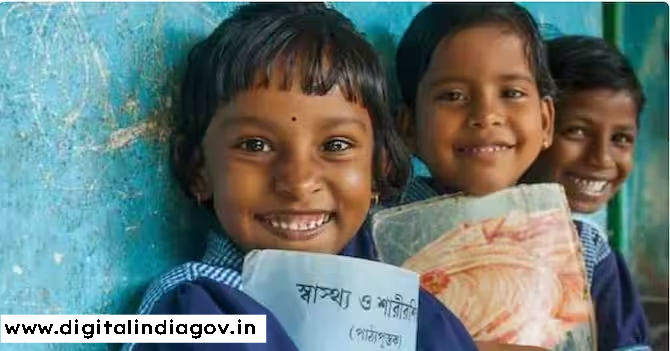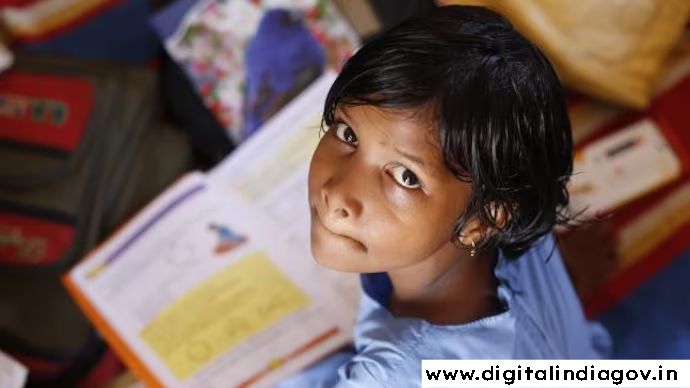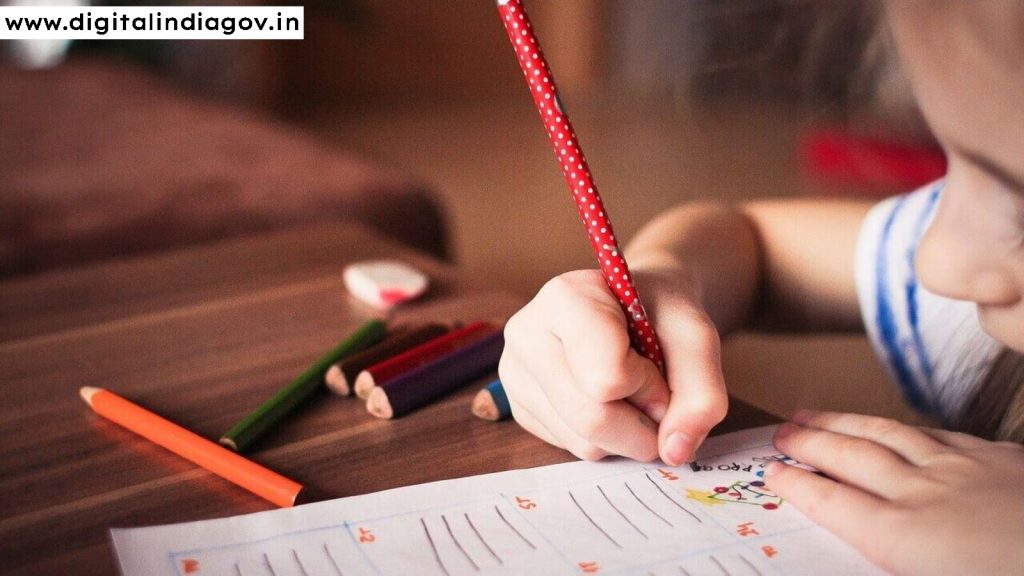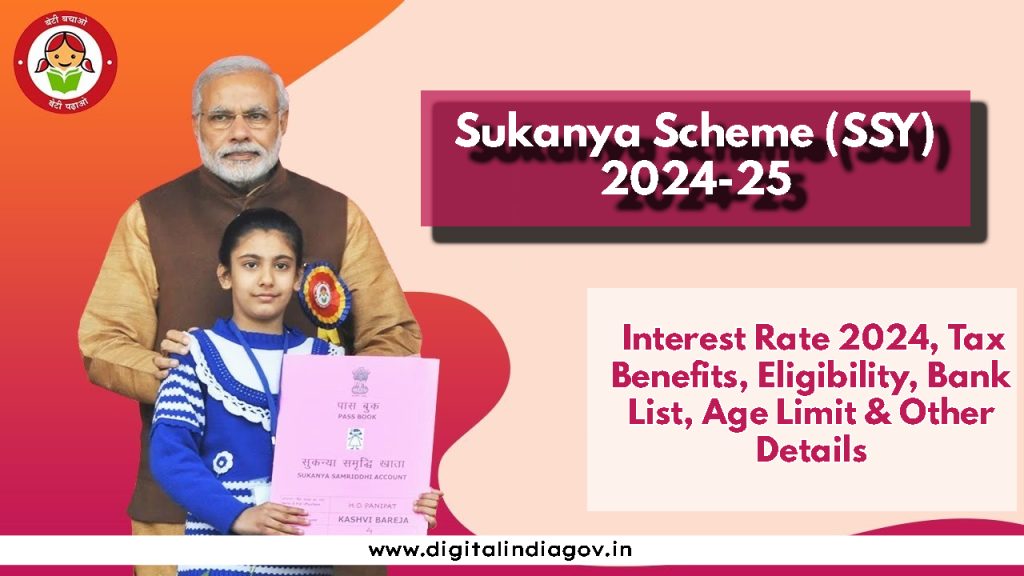Sukanya Scheme:- Prime Minister Narendra Modi introduced the Sukanya Samriddhi Yojana (SSY) as part of the Beti Bachao Beti Padhao campaign. The initiative’s name translates to “Girl Child Prosperity Scheme” and it aligns with the aforementioned goals. On January 22, 2015, Panipat, Haryana, hosted its introduction.
Contents
What is the Sukanya Scheme (SSY)?
The Government of India started a social campaign on January 22, 2015, with the primary goal of addressing the issue of the decreasing child sex ratio in our nation. “Save girls, educate the girl child” is the motto of the Beti Bachao Beti Padhao (BBBP) program. The Ministries of Women and Child Development, Health and Family Welfare, and Human Resource Development are working together on this nationwide project.
The following are the goals of BBBP:
- To outlaw sex determination and eradicate gender discrimination against minors.
- to ensure girls’ safety and well-being.
- To guarantee that girls participate more in school and other fields.
SSY seeks to address two significant issues related to girl children: marriage and education. Its goal is to provide a bright future for girls in India by helping their parents create a fund for their child’s appropriate education and carefree marriage costs. SSY introduced the Sukanya Samriddhi Account for the same reason.

Also Read:- Arundhati Gold Scheme
Sukanya Scheme age limit and maturity period
Opening SSY account
A young girl can only have one SSY account. Any post office or approved commercial bank branch is able to open SSY accounts. It is openable whenever the girl child is born till she becomes ten.
Beneficiary of SSY
All female resident child accounts in India are entitled to benefits under the Supplementary Security Deposit (SSY) from the moment the account is started until it matures or is closed.
Deposits under SSY
Until the girl child reaches the age of 18, the guardian may make deposits and use the account. The daughter child will have to manage the SSY account after she turns eighteen. An SSY account can have a minimum deposit of Rs. 250 (it was previously Rs. 1,000), subsequent deposits in multiples of Rs. 50, and a maximum deposit of Rs. 1,50,000 for each financial year, for a maximum of 15 years. Electronic, demand draft, cash, or cheque deposits are all acceptable methods of payment.
Interest on deposits
The interest rate is 8% p.a. for the second quarter of FY 2023–2024, which runs from July 1, 2023, to September 30, 2023. If the total amount deposited in an “Account under default” (where a minimum of Rs. Up to the account’s maturity date, interest will accrue if the $250 yearly deposit is not paid within the allotted time frame and is not regularized. “Account under default” accounts are rehabilitable within 15 years of the account’s opening, provided a penalty of Rs. 50 is paid for each year the account is in default.
from the SSY has completed its tenure, or 21 years from the account inception, no interest is due. There is no payment of interest once the girl child, whether a resident or citizen of India, departs.
The maturity period of SSY
SSY’s mature term is 21 years from the date of account opening or, if she marries after turning 18, after turning 18. However, the donations are needed for a short fifteen years. Interest will continue to be accumulated on the SSY account even if no additional payments are made after the account matures.
Benefits of the Sukanya Scheme
- Minimum Deposit: Every fiscal year, an SSY account needs to receive a minimum deposit of Rs. 250 in order to be operational. Up to Rs. You can deposit up to 1.5 lakh at any time during the fiscal year, according to your convenience. The payouts appear to be extremely reasonable for individuals from all walks of life. Even in the event that you were to miss a full year’s worth of payments, the account will still be maintained active and you would be penalized Rs. 50 for the outstanding minimum payment of Rs. 250.
- Attractive Interest Rate: As of Q3 FY 2023–2024, it has one of the highest annual compound interest rates among modest savings plans, at 8%.
- Benefits related to taxes: Under Section 80C of the Income Tax Act, you can deduct all taxes on the principal you invest up to ₹1.5 lakh annually. Taxes do not apply to the interest or the maturity amount.
- Long Tenure: Protect your daughter’s future for a period of twenty-one years, or until her marriage at the age of eighteen, whichever comes first.
- Covered Educational Expenses: You can take out 50% of the account balance as of the conclusion of the preceding fiscal year to cover your girlchild’s school costs. You can get this by presenting your admissions documentation.
- As SSY grows, returns are guaranteed because the project has government support.
- Easy Transfer: Any post office in India can transfer funds to any bank, and any bank can do the same.

Also Read:- Nrega Job Card New List 2024
Tax Benefits of the Sukanya Scheme
Moreover, in order to encourage investments in SSY even more, the SSA has been granted the following tax benefits:
- Under Section 80C, investments made in the SSY plan are deductible up to a maximum of Rs 1.5 lakh.
- The annual compound interest on this account is also tax-free, as per Section 10 of the Income Tax Act.
- Furthermore, the proceeds received upon maturity or withdrawal are not subject to income tax.
Calculation of Sukanya Samriddhi Yojana interest
The amount owed between the fifth and last day of the month is the lowest balance of the calendar month, which is used to compute interest on the SSY account. Every financial year, at the conclusion, there will be a single credit of interest.
In general, you may compute the interest earned on an SSY account using the formula below:
A = P(1+r/n)^nt
Here:
P = Initial Deposit
r = Rate of interest
n = Number of years the interest compounds
t = Number of years
A = Amount at maturity
Manually calculating interest on an SSY account can be challenging because interest is compounded annually. Alternatively, you can enter the information, including the age of the girl child, the account start year, and the likely annual investment amount, into our Sukanya Samriddhi Yojana Calculator to determine the maturity amount.
Sukanya Scheme eligibility
- A girl child’s only legal guardian or parents may open an SSY account.
- At the time of account opening, the girl kid must be an Indian resident and under ten years old.
- A young girl may only have one account open at a time.
- A household may only create one SSY account for each girl child.
- Sukanya Samriddhi More than two girls may open an account under the specific conditions listed below:
- It is possible to register a third account if a girl kid is born before a twin or triplet girl, or if triplets are born first.
- It is not possible to add born female twins or triplets to an SSY account.
How to open a Sukanya Scheme account in a post office?
A participating bank or a Post Office branch is where you can open a Sukanya Samriddhi Yojana (SSY) account. The steps listed below must be followed in order to open the account:
- To open an account, go to the bank or post office branch of your choice.
- Complete the application (Form-1) with all pertinent information, and attach any supporting documentation. The sum can range from Rs. 250 to Rs. 1.5 lakh.
- The bank or post office will handle your application and payment.
- Your account will be created by SSY following processing. To officially mark the opening of this account, a passbook will be mailed.
How to open a Sukanya Scheme account through banks?
A participating bank or a post office branch are the two places where you can open a Sukanya Samriddhi Yojana account. If your current bank is one of the cooperating banks, it would be more convenient for you to open an SSY account with them. To download the application for opening an SSY account, go to the websites of the corresponding institutions. To open an SSY account, complete the form and mail it to the partner bank. Among the banks taking part are:
- State Bank of India
- Allahabad Bank
- Andhra Bank
- Punjab and Sind Bank
- Bank of Baroda
- Canara Bank
- Bank of India
- Bank of Maharashtra
- Corporation Bank
- Central Bank of India
- Indian Overseas Bank
- Dena Bank
- Indian Bank
- UCO Bank
- Syndicate Bank
- United Bank of India
- Punjab National Bank
- Union Bank of India
- Oriental Bank of Commerce
- IDBI Bank
- Vijaya Bank
- Axis Bank
- ICICI Bank

Also Read:- Agneepath Scheme Apply
Documents required for Sukanya Scheme
To turn in the documentation and proofs, you must walk over to the post office or bank location where you turned in your SSY application. Please submit a physical copy of the following documents:
- The girl child’s birth certificate
- Evidence of the guardian’s identity and address
- a medical certificate attesting to the birth of several girls in one birth order
- Additional KYC documents, including voter IDs and Aadhaar cards, etc.
- Any additional paperwork that banks or the post office require
FAQ’s
Q. Sukanya: is it tax-free?
Asn- Investment programs like the National Savings Certificate (NSC), Public Provident Fund (PPF), Fixed Deposit (FD), Sukanya Samriddhi Yojana (SSY), Senior Citizen Savings Scheme (SCSS), and Public Provident Fund (PPF) offer tax benefits up to Rs 1.50 lakh under Section 80C of the Income Tax in addition to fixed income and guaranteed returns.
Q. What is Sukanya’s morality?
Ans- Additionally, the Sukanya Samriddhi account takes the lead in terms of safety. Since the Sukanya Samriddhi account is supported by the government, capital protection is guaranteed. Returns are likewise low-risk since it earn a fixed return each year; the only risk here is that the interest rate is liable to change.
Suggested Link:- Our Jharkhand
@PAY
